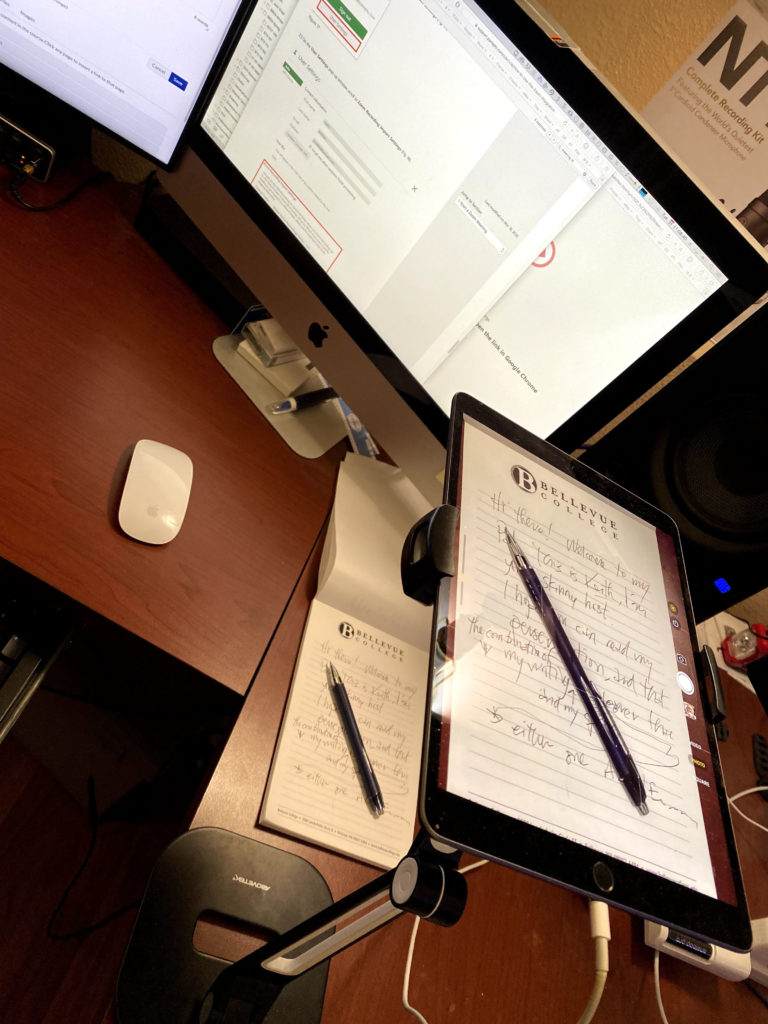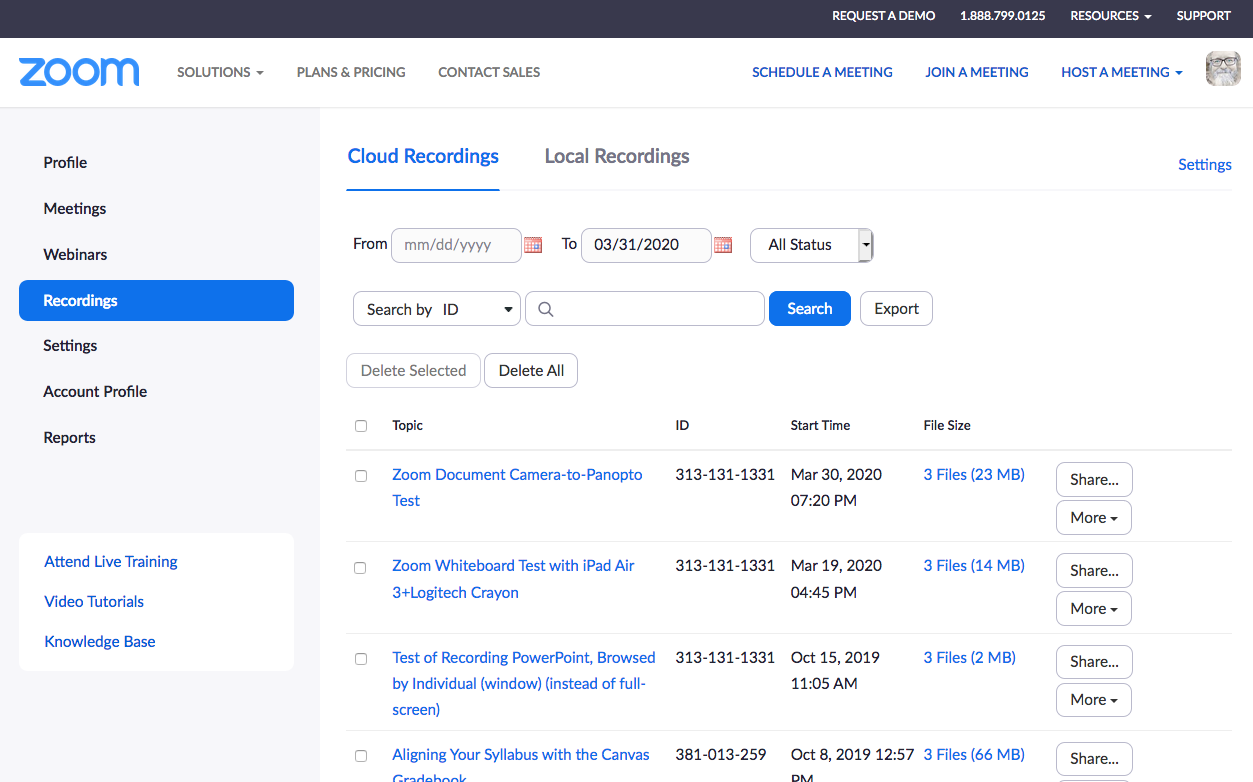I’m teaching two Web Technologies classes this quarter. They have slightly different focuses, and I love each of them. Part of the reason I love these classes (especially as compared to teaching Excel or Word or even Intro to IT) is that the web is so dynamic. It is always changing because it is so easy for creators and publishers of web tools, web apps, and web content to update their creations. The platform (the web) is the tool.
One of these classes, which I’m teaching here at Bellevue College, is called “Web Essentials,” and we start with the most essential software tool of the web, web browsers. It’s so interesting to me that probably the single most common misconception about web browsers is that they are synonymous with search engines. I have to be sure to clarify their differences: that a web browser is the software application that is installed on your local device that enables that “window to the web,” which allows you to actually browse the web… And in contrast, a search engine is what Google does — Google-the-company has jillions of “bots” that “crawl” the web, reading every web page they come across, indexing them, then following links from those pages to others, ad infinitum. Then, they allow us regular web users to type (and now speak) our incredibly inane, unclear, and amorphously hazy search terms into their search fields, whereupon their “algorhythms” parse our meaning in anticipation of what we really want to know, then spit out exactly what we didn’t even know we were looking for. Incredible technology. But totally different than a simple web browser.
After web browsers, we move into email and other ways of communicating on the web, such as chat, messaging, social media, SMS, videoconferencing, etc. We talk about etiquette, which is proper behavior. The way we communicate — the words we use, the level of formality — are different mainly dependent on who our audience is, but also depending on the method of communication.
Then we move into how to find the information that we’re looking for (which, as noted above, Google is able to anticipate to an amazing degree) and how to judge the validity of information that we find on the web. This is such an important skill for any digitally-literate person these days, what with the prevalence of “fake news,” “parody sites,” and plain old propaganda.
Then we touch on networking, collaboration, and cloud computing. We get the students into groups and have them do some web research and then write up their findings in a Word Online document. I love this assignment because it introduces many students to the main strength of Word Online, which is the ability of multiple authors to compose a single document simultaneously. I was introduced to this cool process back in 2012, when I helped edit a book that was being co-authored by a person in Los Angeles and another in Lake Atitlan, Guatemala. We’d start a three-way conference call going on our mobile phones, and then we’d sit down for an hour a week and make large-scale edits to paragraphs and chapters. In between those weekly meetings, we’d independently log into Google Docs and do our own work — the authors composing and me editing on a smaller, more detailed scale. Unfortunately, the book remains unfinished, but the process itself was such a great learning experience for each of us in our own way. We all learned some cool new technology tools, but we also learned a lot about the subject matter that the book was about (women taking their power), and how to communicate deep thoughts about the state of humanity. There is no other way that the three of us could have made such deep connections while living thousands of miles apart.
Then this past week, we moved into internet safety, which is always a shocking experience. So many people don’t understand the myriad kinds and levels of risk that come with using the web the way most of us do — from email to social media (the Facebook/Cambridge Analytica breach was big this quarter), to complex passwords-nee-passphrases, malware, physical security, etc., etc., etc.
Next week, we start the unit on “contributing to the web,” in which we start with blogging, then get into constructing web pages and web sites using HTML and CSS. It is a very basic intro, but so much fun. Students really seem to blossom when they see how changing some CSS code changes the appearance of their otherwise-blase web pages.
So really, I love the Web Essentials class.
But I’m also teaching another class at Lake Washington Institute of Technology called “Web Technologies.” That class is even more fun, because it’s a bit more advanced. We concentrate on studying web-based tools that people are using right now out there in the real world, and new, cutting-edge tools that are becoming more widely adopted or are showing promise of becoming relatively mainstream. For instance, one of our main communication channels is Slack. Now, I’ve been hearing about Slack for a few years as “the email killer,” but, up until this quarter I’ve not had the opportunity to use it. So I took this opportunity to create a Slack “workspace” for our class and create some assignments in it. So I’ve become considerably more familiar with it. And while promises of “the email killer” are predictably overblown, it does provide some cool functionality that is more a combination of email and instant messaging and voice telephony. Students seem to appreciate the chance to work with it, if at least for the legitimate reason of putting it on their resume.
I introduce Slack as a powerful communication tool for workgroups during the same time that we get into social media. We mainly use LinkedIn, since it’s the social network for professionals. But no unit on social media would be complete without addressing Facebook and Twitter. So I allow students to choose between them. And since effective social media is about maintaining a presence so that your audience has a reason to keep up with you, students are required to participate in LinkedIn weekly, and also blog weekly in Slack (which may more accurately be called “slogging” than “blogging”).
Then we move into collaboration in this class, which, since it is a totally-online class, is both more challenging and more interesting. Student seemed to really enjoy the two-week project in which they worked with a partner to choose a topic and then to use Word Online to compose a research paper. I feel that, compared to the one-week online collaboration project in the Web Essentials class, this two-week project in the Web Technologies class was more real-world. In fact, it really reminded me more of my Google Docs collaboration with my partners in LA and Guatemala. It took more time and took more of a commitment to the remote-collaboration process, while the one-week project seems like more of a short introduction to online collaboration. And I think that’s ok — the Web Essentials class is more of an introduction or survey of what’s possible on the web, whereas the Web Technologies class goes a bit deeper into actually using the web to get real work done.
This week in Web Technologies, we started a two-week unit on Presentation tools. I’m pretty excited about this chapter, really, because, in general, students seem to enjoy PowerPoint a little more than, say, Word or Excel. I think it’s because presentation tools allow for a bit of visual creativity. This week, students are using PowerPoint Online. It seems like a logical next step from Word Online. Then next week in the second week of the unit, I will show them a few other online presentation tools — Adobe Spark, Prezi, and Microsoft Sway — and they will use one to create a presentation.
Then for the last three weeks of the quarter, we cover video and webinars. I think I’ll show them Screencast-O-Matic and then Zoom. Most of the students are at least familiar with Zoom from a participant’s perspective, as I’ve been using it to hold online office hours. This will be their chance to run a webinar. They’ll have to schedule a meeting with me (and any other classmates they wish to invite), then run the webinar in which they go through a prepared presentation, and record it.
It has been a lot of work to create this Web Technologies class. Luckily, I didn’t have to start from scratch. I had a pretty strong base to work from, thanks to Barb Anderson, who had run this class about six years ago. But again, the web is always changing, and six years in web time is the equivalent to at least a generation or two in human terms. For example in 2012, “Web 2.0” was still a thing. “Web 3.0” never even happened because the “interactivity” that was such a hallmark of Web 2.0 has become such an ingrained, inherent part of how we use the web now, mainly with the advent of ubiquitous smartphones, which ubiquity is now expanding even more into our everyday lives via the Internet of Things (IoT) and digital assistants, which are themselves built on artificial intelligence and machine learning.
Maybe the next time I teach this class, we will look at some smartphone and/or IoT apps. According to my week 1 interest survey, this class was interested in them. And, as long as they’re web-powered or even just web-connected, they should be fair game. To me, this is endlessly exciting stuff!











